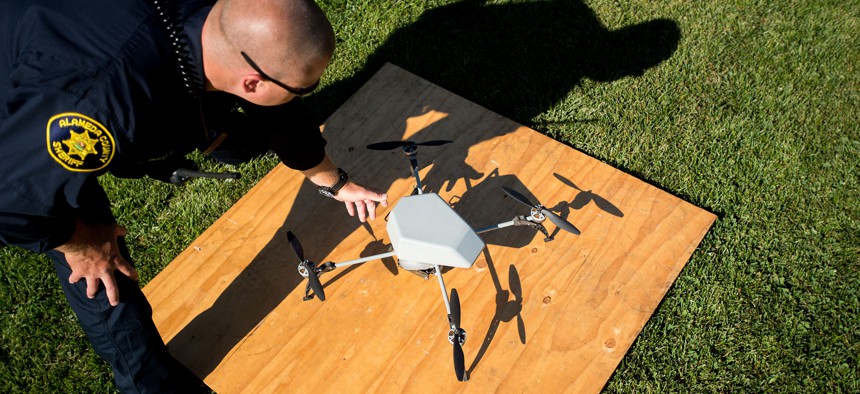Connecticut Police May Soon Hunt Perps with Lethal Drones
A new bill under consideration forbids civilians from outfitting drones with weapons but includes a crucial exemption for police.
Drone attacks are something Americans hear about from a great distance, as a controversial and deadly tool of US foreign policy. But if a new bill passes, Americans in one state might come a bit closer to understanding what it’s like to have weaponized drones flying overhead.
The new bill, designed to regulate the use of drones in Connecticut, forbids civilians from outfitting them with weapons but includes a very crucial exemption for the police. Although the details are yet to be hammered out, the bill would allow officers to use drones with both lethal weapons and non-lethal ones, such as Tasers or tear-gas canisters. (While no state in the US allows the use of deadly force by drones, North Dakota allows officers to equip them with stun guns and other non-lethal weapons.)
“Obviously this is for very limited circumstances,” said Republican state senator John Kissel of Connecticut, according to the Associated Press. “We can certainly envision some incident on some campus or someplace where someone is a rogue shooter or someone was kidnapped and you try to blow out a tire.”
The bill, which has passed through one committee in the Connecticut legislature, still has to be voted on in both chambers. But civil-liberties advocates, surprised by lawmakers tacking the weaponization amendment onto a general drone bill, say they plan an immediate fight. “The police don’t need this option to keep us safe,” said David McGuire, executive director of the American Civil Liberties Union’s Connecticut branch. “There’s not a convincing need for this. We’re just really troubled by this on so many levels.”
See also The 9 Strangest Flying Robots from the World’s Biggest Drone Show
Don't miss The Era of Lethal Police Robots has Arrived
And Military Robotics Makers See a Future for Armed Police Robots
He is hopeful that the amendment can still be defeated, with a number of lawmakers—even those who voted to pass it in committee—concerned about the use of deadly force provision.
Creating a lethal distance
While proponents—and the bill itself—say that officers would be adequately trained to use weaponized drones, there is no domestic experience to draw upon for best practices. “We really have to go to international war conflict to find examples,” McGuire said. “It’s virtually impossible to put the proper safeguards in place.”
And such precautions would be crucial. McGuire points to one prominent criticism of drone warfare: that separation between the drone operator and the target increases the likelihood of using force. “It’s almost video-game like,” he said. Across the US, the Federal Aviation Administration generally forbids the flight of drones out of the operator’s line of sight. It’s unclear how the Connecticut regulation would deal with these rules, and McGuire says that even if drones remain in the line of sight, the device still provides an additional layer of removal, of “de-personalization.”
New tech, old problem
And then there is American policing’s historic problem: bias against minorities. Connecticut requires that police document all Taser use, and in 2016, a report found that officers used stun guns disproportionately against minorities. “Subconscious bias is a real problem in policing, but when you bring into a context of a weaponized drone it’s a matter of life and death,” McGuire said.
The irony in the Connecticut discussion is that weaponized drone amendment was added onto “a good bill that protects people’s rights,” he said, different versions of which the ACLU has supported for years. It includes a provision that would require police to get a warrant before using drones for surveillance or other purposes, and McGuire says it would be one of the strongest drone regulations in the country.




